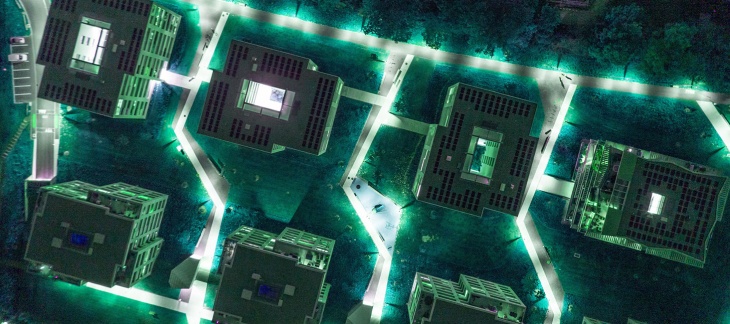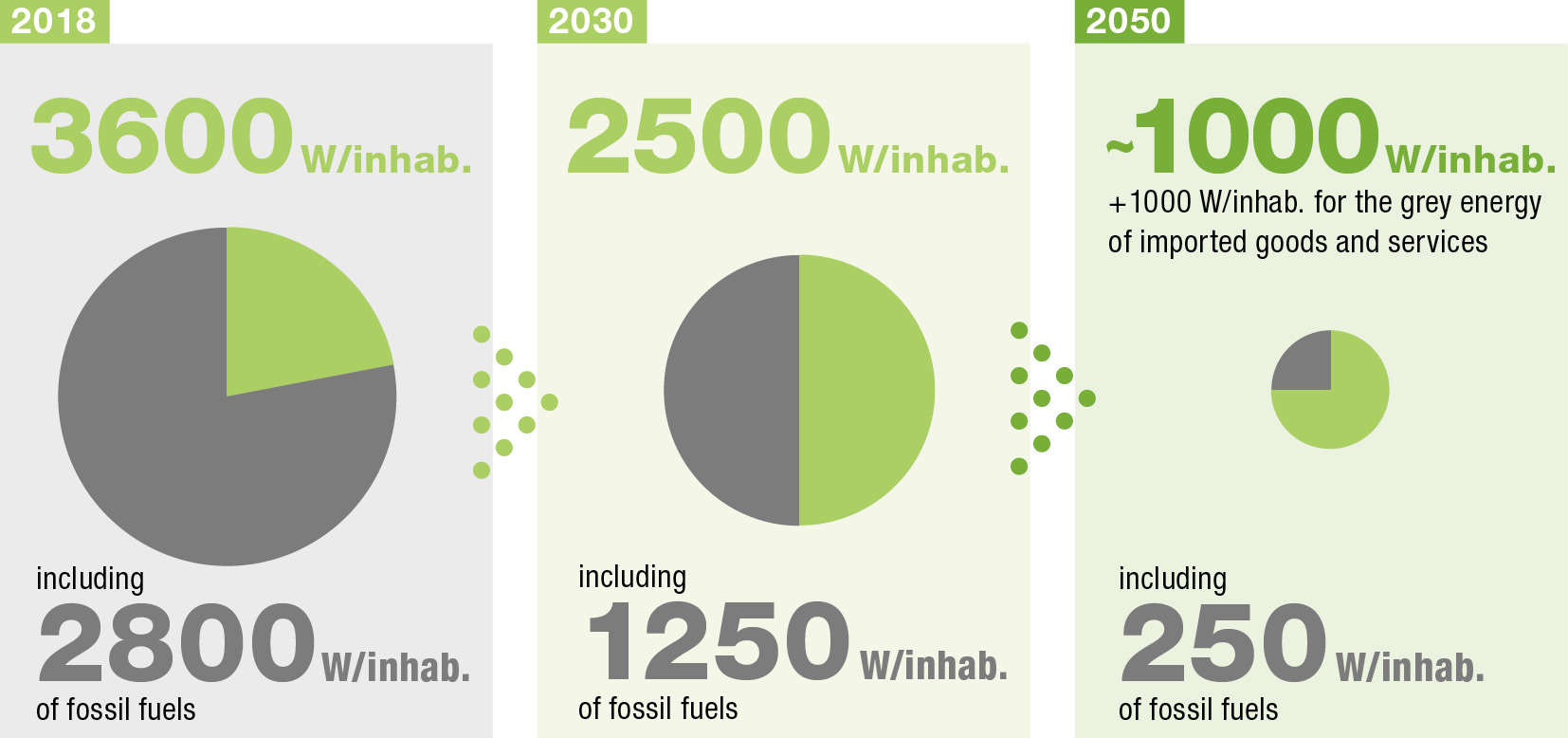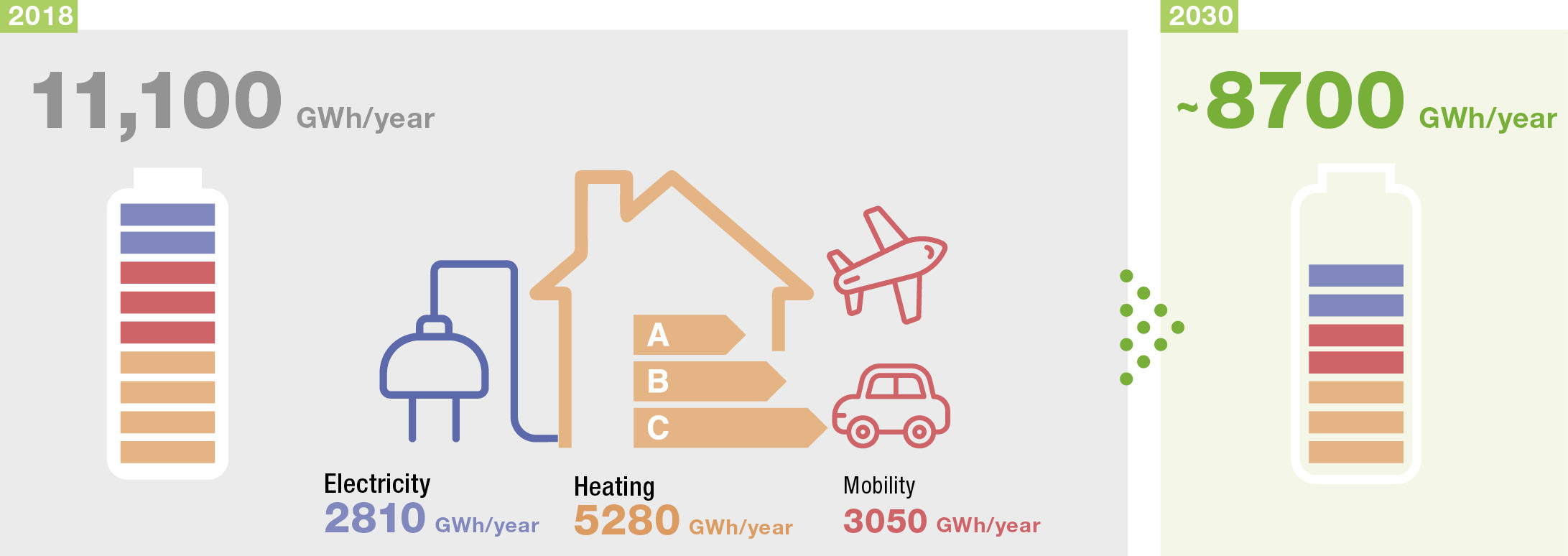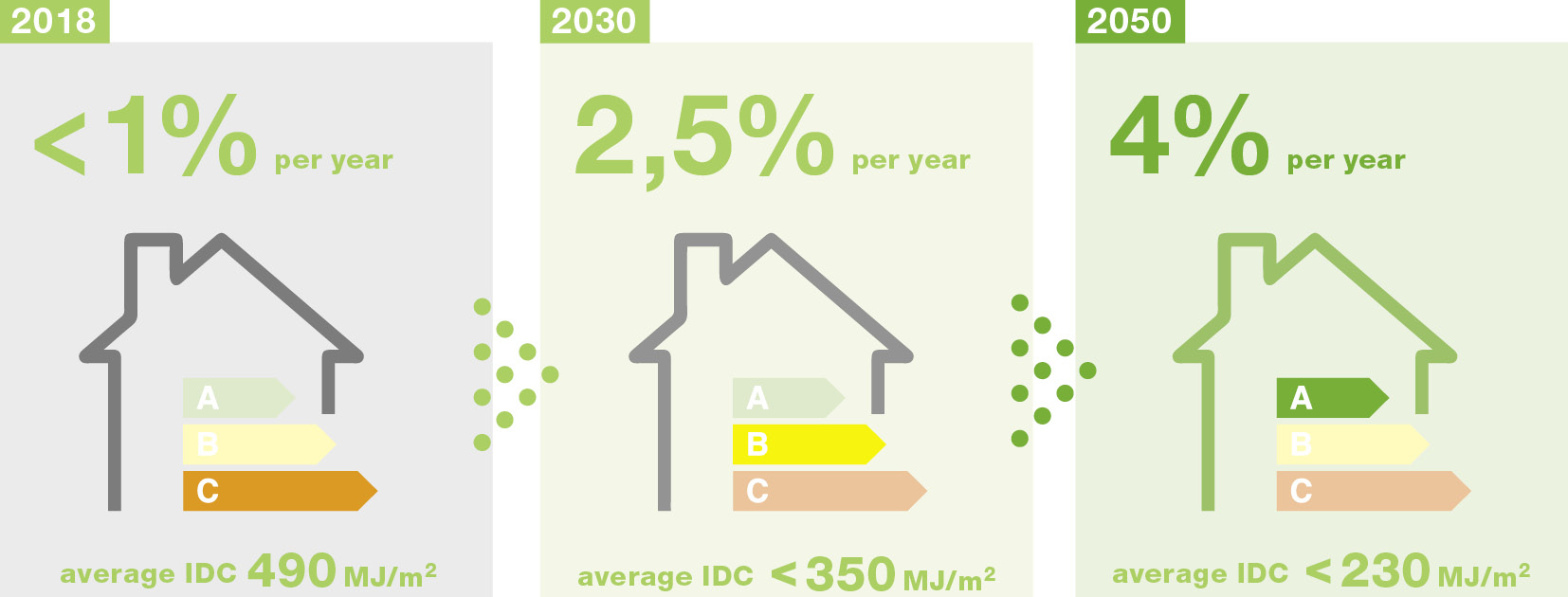
Through a programme of concrete measures, co-constructed with all stakeholders and consulted by the sectors concerned, the EMP will make it possible to accelerate the Canton’s energy transition.
The EMP sets out the main areas of focus of the cantonal energy policy and defines the key stages in achieving the targets fixed for 2030 and 2050. To initiate the major shift needed to attain these objectives, the mission of the OCEN (Cantonal Office of Energy), via the EMP, is to scale up efforts already underway to control and reduce energy demands and, on the other hand, to optimise renewable and local energy resources.
The two main objectives of the EMP: reducing and optimising energy consumption!
To meet the ambitious targets set out by the Council of State and the Grand Council, the EMP focuses on two principal areas :
1. Consumption
Controlling and reducing energy demand through :
- increased energy efficiency and renovation of the building stock
- greater sobriety in terms of purchasing and use
2. Supply
Optimising utilisation of local energy resources by :
- local renewable resource enhancement
- establishing a storage and management system
- setting up an energy sharing infrastructure
Goals of the EMP
Achieving the targets set out in the EDP by 2030 poses an unprecedented challenge that requires a major shift in our approach to energy consumption. For the Canton, this energy transition also brings with it opportunities, offering economic prospects, a more resilient environment for our children and better management of our region.
Achieving the 2000-watt society
- a 3.5-fold reduction in energy consumption
- tripling the proportion of renewable energies
Responding to the threat of climate change
Aim: to reduce the Canton's greenhouse gas emissions to achieve climate neutrality in 2050, despite the population increase (excluding emissions from imported goods and services)
Local resource enhancement
Aim: to develop and optimise the Canton's solar, hydraulic and wind energy production capacities
Reducing energy requirements
Aim: to drastically reduce the Canton's total final energy consumption
Developing thermal district heating networks (DHN)
Aim: to pursue the use of the Canton's strategic energy infrastructures in order to meet the thermal requirements of buildings by 2050.
Reducing the energy consumption of buildings
Aim: to accelerate the energy transition of the building stock in terms of quantity and quality and reduce energy consumption per m2 of living space through optimisation measures (decrease in the average heating requirement index (IDC) of Geneva’s real estate stock).
An action plan with five areas of focus
To meet the Canton’s main energy challenges and energy objectives, the EMP action plan focuses on 5 main areas: Sobriety, Efficiency, Resources, Storage & Management and Infrastructures.
Constructed in conjunction with the sectors concerned, 28 action sheets - established for each area of focus - define short, medium and long-term objectives, as well as the roles and responsibilities of the actors stakeholders concerned.
Area 1 : Consumption - Sobriety
- Generate a paradigm shift involving all actors stakeholders in society
- Sobriety in regional planning, anticipating needs, adapting infrastructures
- Modify spatial organisation and optimise the building stock
- Bring about changes in behaviours and uses, rethink sizing
- Promote shared technologies, cleantech, low-tech and no-techanger de paradigme en impliquant tous les acteurs de la société.
Area 3 : Approvisionnement – Ressources
- Massively develop thermal and photovoltaic solar energy
- Optimise use of thermal waste
- Explore and exploit geothermal resources
- Set up channels for wood-biomass resource enhancement
- Optimise hydroelectric resources
- Study and develop wind energy potential
-
Objectives
- Utilise 350 MWp of photovoltaic solar energy and achieve 100 GWh/year of solar thermal energy by 2030
- Develop 150 GWh/year of medium-depth geothermal energy by 2030 if the potential is confirmed
Area 4 : Supply - Storage and management
- Identify, locate and implement thermal storage solutions
- Develop electricity storage capacities
- Pursue the development of the hydrogen sector
-
Short and long term storage
- Ensure that electricity production is timed to coincide with use, and similarly for a heat source and demand.
- Contribute to peak capacity and the strengthening of the electricity network
- Participate in emergency services: their frequency and short-term stability
- Have the capacity to optimise use of excess electricity later, but in a different form
Area 5: Supply – Infrastructures
- Lay down the principles for implementing the Grid Energy Master Plan (PDER)
- Map of the deployment plan for strategic district heating networks
- Integrate the development of strategic district heating networks (RTS) into their areas of influence
- Develop CADSIG and CADIOM, strategic district heating networks used to supply heat
- Utilise GeniLac, a strategic district heating/cooling network for the provision of heat and cooling
- Promote the development of non-strategic district heating networks (RTNS)
- Plan future changes to the gas network to support energy transition
- Control the development of the electricity distribution network, a pillar of energy transition
- Facilitate the integration of decentralised electricity production from renewable sources
- Develop the Smart Grid in Geneva
- Optimise potential for network convergence for the benefit of energy transition
Objectives
To distribute 1150 GWh/year of heat and 150 GWh/year of cooling by 2030 with a renewable and recovered energy rate of 80%.
An EMP designed to work with the Canton’s other planning tools
- The implementation of the cantonal energy policy depends on other master planning tools that must be closely coordinated with the EMP.
- A Cantonal Climate Plan (PCC)
- The Cantonal Master Plan 2030 (PDCn)
- The Cantonal Agenda 2030 for Environmental Protection
- The Subsoil Resources Management Plan (PGR)
- The Mobility Plan and the Electromobility Strategy 2030
- The Air Quality Protection Strategy 2030
- The Scheme for the Protection, Planning and Management of Water Resources (SPAGE)
- The Biodiversity Strategy 2030
- The Geneva 2050 project
- The Cantonal Agenda 2030 for Sustainable Development
- The Digital Policy for Geneva
- The Cantonal Economic Strategy 2030
Accompanying measures: Two catalysts for the cantonal energy policy
The role of the State is to provide the necessary impetus and support to mobilise all stakeholders. In order to meet its ambitious objectives, the Canton is setting up an incentive and regulatory system to encourage owners to optimise the energy efficiency of their real estate.
An unprecedented approach: a co-construction with all stakeholders
The Council of State wishes to build this EMP in consultation with all stakeholders in order to generate universal assimilation and mobilisation. The commitment of all stakeholders is vital to accelerate the Canton's energy transition. The latter represents the creation of shared value for the whole of society: a new ethical ecosystem that is a vector of sustainable local wealth, growth and well-being.





